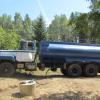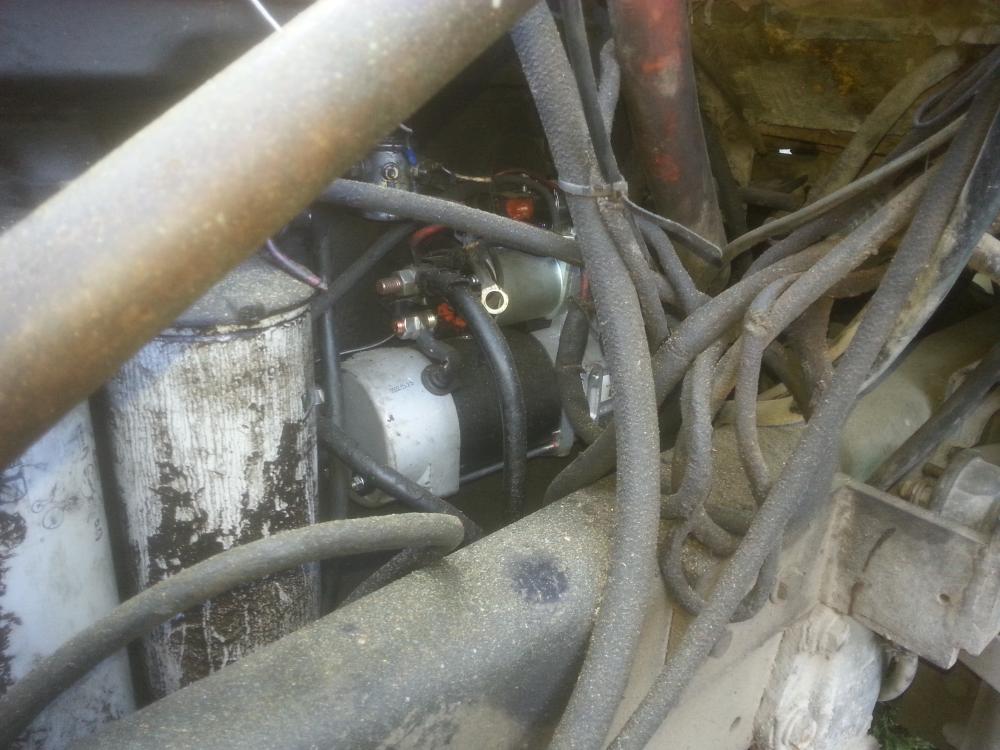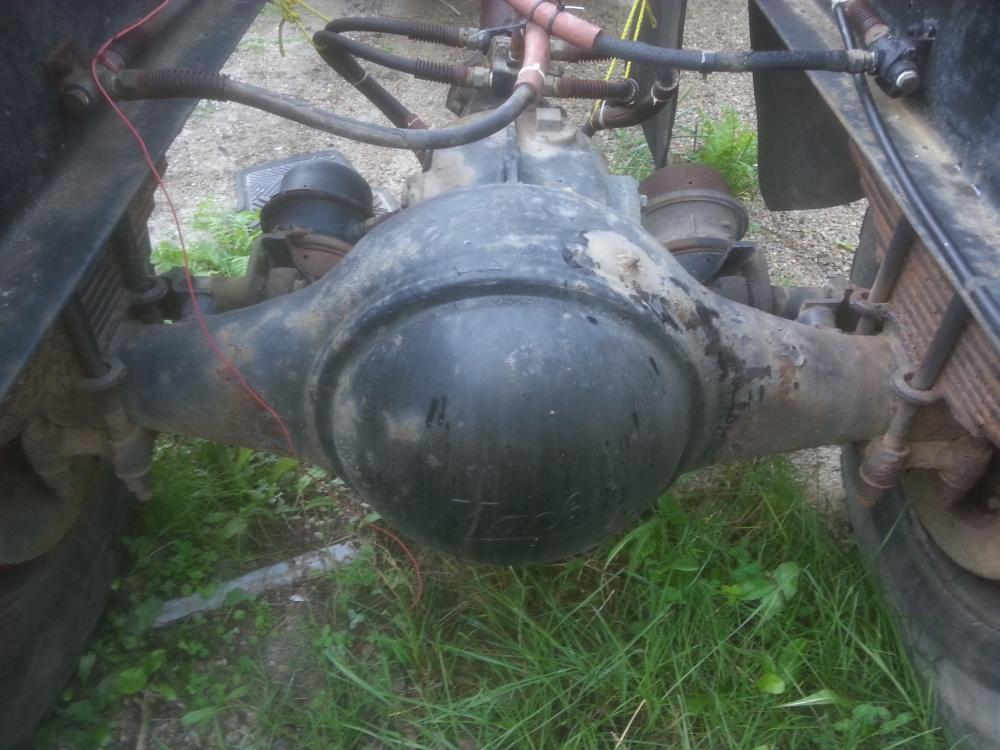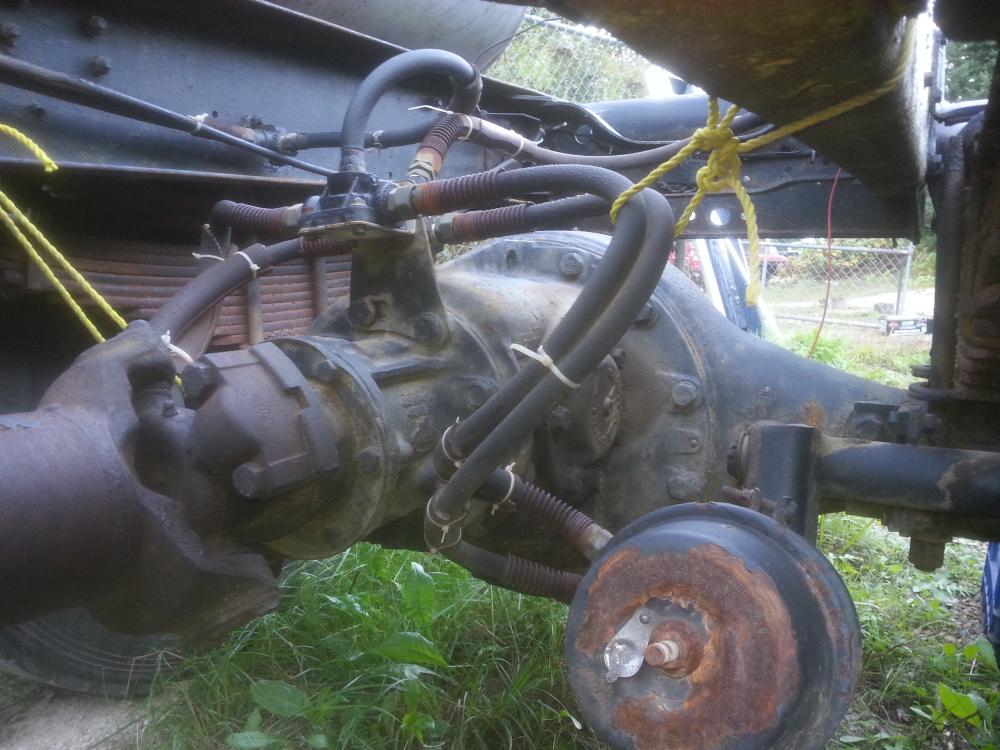-
Posts
304 -
Joined
-
Last visited
Content Type
Profiles
Forums
Gallery
Events
Blogs
BMT Wiki
Collections
Store
Posts posted by Full Floater
-
-
Thank you for sharing that pic of your lifting apparatus. I like it. I am going to try my best to avoid using the head bolts. I'll see what I can come up with
-
51 minutes ago, Freightrain said:
I should have a lifting bracket I made for mine. It's been so long I don't recall what end I bolted it to. Don't think I used headbolts either even though I pulled the heads off.
I'll see if I can find it and post a picture.
Awesome, thank you.
-
I'm about to lift 2 different 675, 235hp engines to swap one of them into the other truck.
I have never lifted a Mack engine before and I plan on using a steel cable/strap under the rear of the bellhousing/clutch housing; but still need an idea for lifting the front. I have read that some have used the valve cover bolts to affix a bracket to (I'm not that brave). And some have used a couple head bolts. I am really not wanting to disturb the head bolts on the one good running engine that's being pulled.
Are there any other ideas on a front lifting point?
Thanks
-
Is there a particular temp that these engines "like" to run at? It's cooling system re-fresh time for me on a Canadian 235 and I want to do the thermostat while im in there. It's in a tow truck that doesn't tow max gvw loads and short trips more then long trips so im thinking a 170 or 180 degree stat
-
 1
1
-
 1
1
-
-
On 10/10/2022 at 9:05 PM, BOBWhite said:
Any updates on this? Been looking for a fix for this and never heard of this kit.
No updates on my end. I have several engines that could use this. I just simply haven't looked any further into it
-
 1
1
-
-
Yes, I think re-sealing as much as possible is the ticket. Front and rear mains, timing cover manifold gaskets? oil pain. Not the head gaskets. does the oil cooler have any seals? It runs and starts great, no blow by, no leaks, no oil in air tanks that I tell. about 8000hrs on it. 320,000miles or so. It hasn't been worked as hard as some. I could just throw it in as is, but i'd like to do a little better then that. Freshen it up a bit, and bump up the reliability factor.
This is a project for ME to use, not doing this on a customers truck. It's being made into a single axle rollback truck and will work daily. With me driving it, no cowboys.
-
 1
1
-
 1
1
-
-
Are there any leak prone seals or anything that would be easier addressed while the engine is out? It's going into a Western Mack, so narrower frame rails make a few areas like around the compressor and power steering pump, difficult to access.
-
Will be swapping a good running ENDT 675 235hp from a truck with a bad body, into another chassis that's already equipped with a 235, but is worn out. Both are 107 6 speed trucks.
The donor engine runs like a top, but I would like to re-seal or service anything that should get done when the engine is out of the truck. Rear main, oil pan etc. Im new to swapping these engines, can anyone give me a quick "list" of things I should look at while the engine is out and easily serviced? It will be getting a new clutch while it's out, jacobs 675 jake heads (overhead adj obviously) and fresh injectors, hoses etc.
-
This axle is from a 1976 R 685ST
Yes I will be pulling the hubs to give it a good inspection and replace the hub seals for sure and likely the brake linings. Hopefully I can get a number off the seals when I pull them out. Will change the gear oil and probably leave the rest alone for now.
Yes I do believe that the "power divider" description in the build sheet might be reference to a LSD type axle, shifting power from side to side instead of axle to axle. After checking oil levels I will drive the truck over some loose ground with no weight in the back and see if both wheels have a tendency to put power to the ground instead of just one wheel.
I think painting the MACK lettering on the rear of the axle in the same red that the cab is going to be, is and excellent idea. Let everyone behind me know for sure they are following a pedigree Mack. May as well throw some Mack "greatest name in trucks" mud flaps on to!
-
 2
2
-
-
If anyone out there has a service manual for this particular axle, and is willing to sell it.....I'd buy it
-
8 hours ago, Joey Mack said:
I'm no pro, but you reckon the hubs have a seal in the middle, and the wheel bearings are packed with grease, like a B-Model?
I'm totally unsure at this point. Have not pulled the hubs off this one, yet.
-
Anyone know the oil grade they require? I would guess probably 80w-90 but i'd like to go 75w-140, just wanna make sure I don't bugger this thing up by doing that
-
They can sure bring a man to almost tears. I have a White Western star that is almost as bad. Also swapped that to a 39MT on the Big Cam Cum-a-part which made install easier
-
 1
1
-
-
Thank you. Yup im hoping it will turn out well. It's a 23k rating which is exactly what I need for the application it's going into. And im just fine with spring suspension. It's fairly low mileage and feels tight
-
 1
1
-
-
-
-
Ya im not into the additional stresses on the engine, BUT......I would be interested to see if a compound turbo setup could be tuned to drastically reduce that thick Mack exhaust smoke on upshifting/acceleration
-
Yeah they are rare here to. Everyone tells me to put an Eaton and air susp in this truck im building but I would MUCH rather run this Mack single drive rear just cause it's something different. And being Mack, probably better. Im hoping.
-
Hi.
Im working on a single axle R with a RAD529C and a CRD1171 Carrier. Do we like these axles? Is there anything to look out for in regards to problems? According to the build sheet and some info I found online, the CRD1171 is some sort of power divider. How does that work in a single axle?
Thanks
-
If anyone has a fiberglass Lund style visor and willing to ship to BC canada, please let me know.
-
On 8/29/2022 at 10:07 AM, 67RModel said:
Your thinking about that wrong. With either way you will have electrically motivated corrosion of one component or another. In a positive ground system the sacrificial anode is the vehicle itself (chassis and bodywork). In a negatively grounded system the wires, connections, and electrical components become the sacrificial anode(s). So in theory a positively grounded vehicle would be more likely to be "rotted out". However, with that being said the amount of chassis/body metal lost due to electrical corrosion in a positive grounded system would be miniscule whereas the same amount (mass of metal lost) of corrosion in a negative grounded system could have much more effect on the vehicle due to corroded connections and components as well as dissolved wires. With modern insulation materials and much more robust connections the "problems" associated with negative ground have become a moot point. There is still is a better theoretical justification for positive ground. When you consider the electromotive series of metals negative ground is incorrect. Why negative ground is the normal convention is a topic for a different discussion.
Thank you for the detailed response. Would YOU go thru a conversion from pos to neg ground, if you were in my shoes?
-
2 hours ago, doubleclutchinweasel said:
Could not get the fuel gage to work. Not sure if that was due to the polarity or not.
like I mentioned earlier, the cables were swapped at the starter. Otherwise the starter would turn the wrong way.
All the lights were fine.
Used the internal regulator in the alternator, and left the old regulator unhooked.
It was really not much of a big deal.
Thank you for your response. I think I might go ahead and convert one of mine that im working on.
-
I'm starting work on resurrecting a 75 R model. I believe 75 was one of the last years of positive ground on them. Most of the electrical is functioning well aside from a few things that aren't working. I was wondering what all I would have to do to convert to neg ground, just for the simplicity of things. OR should I just leave it alone? Is there truth to the myth of pos ground vehicles rusting/corroding less then neg ground? This truck is pretty clean for rust and corrosion so im wondering if pos ground had something to do with it.
-
Got the 39MT in. Will get a pic later today. Much easier to handle then the 40 or 42MT. Probably still have to remove one of the oil filters for install (which I already had out) but so what. It spins the engine over plenty fast. The truck has also lost it's prime, so had to do some long cranking and it did just fine.
This truck is positive ground so I did bypass the neg ground solenoid that was on the 39mt and wired the trigger wire to an existing solenoid already on the truck for the old starter.
-
 1
1
-








235 Swap
in Engine and Transmission
Posted · Edited by Full Floater
Does anyone have any insight as to what crank main seals I should order? In particular, the rear? And is there a special service tool needed to install the seal on these?
I have done many a crank seal, but never on a Mack 675....so just want to make sure this guy goes in right.